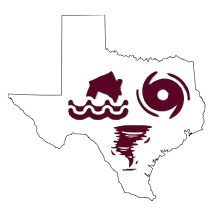How to Prepare for the Next Storm
Gather emergency supplies and personal documents.
You can do this in your house now. Many items you need are probably already in your home. Make a list of essential emergency supplies, such as gallons of water, non-perishable food items like canned food, etc., and check and restock each month so the supplies are complete and not outdated or used. This will help you avoid rushing to a store during an emergency to gather supplies. There will be long lines and empty shelves, and you will add to the crowd and confusion. You should also put together an evacuation kit with critical personal items, such as a driver’s license, birth certificate, clean set of clothes, medications, cash for travel expenses, a list of emergency phone numbers, and copies of insurance policies and your pets’ vaccination records and other documents.
Create an evacuation plan for both a flood and a hurricane
Different hazards require different responses. For a hurricane, your plan may include sheltering in your house if it is outside the evacuation zone and sufficiently strong. If you cannot use your house or stay with a friend or a relative, find a shelter that is officially open (listen to local radio and television). For a flood, evacuate to higher ground only if you know that your house is located within a Special Flood Hazard Area or if you are instructed by local officials to evacuate. Once you have evacuated, the wait may be several hours or days before you can return. Discuss and practice drills for your evacuation plan with your family each year.
Know your house and your property; take actions that fit your circumstances.
A) When was your house built? Blueprints or other information may be available from your homebuilder, your architect, or your local building department. A house built after the early to mid-1990s should have hurricane clips to tie the roof to the wall and strong connectors from the wall to the foundation (see Part 4). If your house was built before then, you can still retrofit at a reasonable cost. The actions a homeowner can take will vary with each house. For the majority of homeowners, there are steps that can make a significant difference, such as protecting your windows, doors, and garage, and upgrading your roof.
B) Where is your home located? If your property is near a ridge or at a higher elevation, it may be especially susceptible to wind damage. If your property sometimes floods, you may or may not be in a floodplain. In any case, you should consider setting up an insurance policy and fortifying your house. If trees hang over or stand too close to your house, consider trimming or cutting the branches that might damage your house.
Seek the assistance of a qualified, licensed architect, structural engineer, or contractor.
New technology continually allows researchers to conduct better studies and engineers to improve building methods and products. This handbook covers work that you may be able to do yourself. However, it is always a good idea to consult with a professional for the most up-to-date information. If you cannot do the work yourself, make sure the person you hire has references and insurance, and sets up a formal contract with you. Many communities have a local registry for contractors, if you need assistance in finding someone.
Buy insurance, take advantage of potential discounts for premiums, and finance creatively.
Do not gamble with the investments you have made in your house and your belongings. Obtain adequate insurance for wind and flood risks (see Part 5). Coverage may vary among companies, so talk with your insurance agent about discounts that may be available. Significant discounts may be provided for reducing your risk by installing window protection, roof to-wall connectors (hurricane clips), and wall-to-foundation connectors (see Part 4). Many projects are not that expensive, especially if completed in phases. For more costly projects, a small home improvement loan combined with potential insurance discounts can make these projects more affordable.
